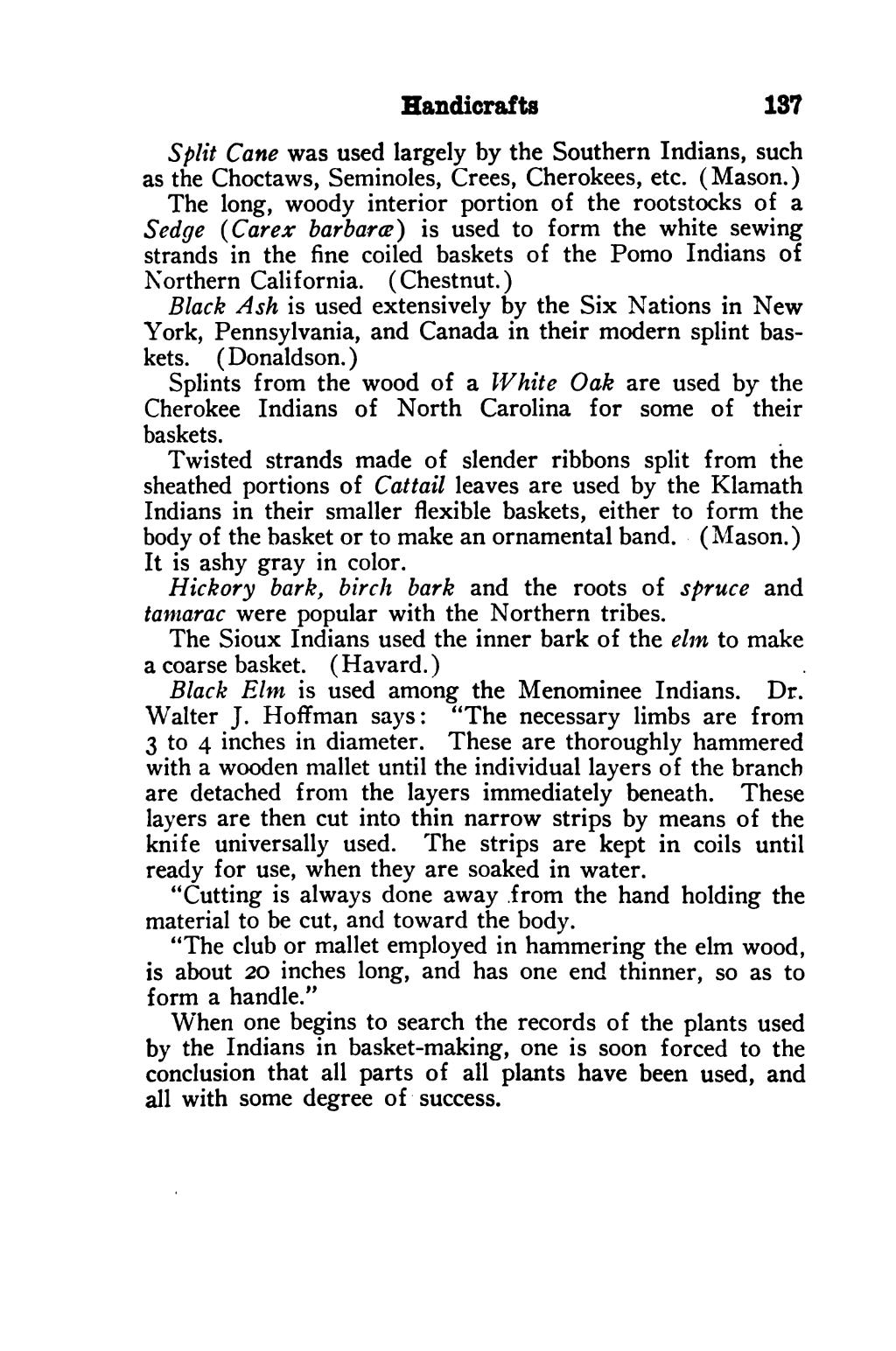Pokračování textu ze strany 152
Split Cane was used largely by the Southern Indians, such as the Choctaws, Seminoles, Crees, Cherokees, etc. (Mason.)
The long, woody interior portion of the rootstocks of a Sedge (Carex barbaræ) is used to form the white sewing strands in the fine coiled baskets of the Pomo Indians of Northern California. (Chestnut.)
Black Ash is used extensively by the Six Nations in New York, Pennsylvania, and Canada in their modern splint baskets. (Donaldson.)
Splints from the wood of a White Oak are used by the Cherokee Indians of North Carolina for some of their baskets.
Twisted strands made of slender ribbons split from the sheathed portions of Cattail leaves are used by the Klamath Indians in their smaller flexible baskets, either to form the body of the basket or to make an ornamental band. (Mason.) It is ashy gray in color.
Hickory bark, birch bark and the roots of spruce and tamarac were popular with the Northern tribes.
The Sioux Indians used the inner bark of the elm to make a coarse basket. (Havard.)
Black Elm is used among the Menominee Indians. Dr. Walter J. Hoffman says: “The necessary limbs are from 3 to 4 inches in diameter. These are thoroughly hammered with a wooden mallet until the individual layers of the branch are detached from the layers immediately beneath. These layers are then cut into thin narrow strips by means of the knife universally used. The strips are kept in coils until ready for use, when they are soaked in water.”
“Cutting is always done away from the hand holding the material to be cut, and toward the body.”
“The club or mallet employed in hammering the elm wood, is about 20 inches long, and has one end thinner, so as to form a handle.”
When one begins to search the records of the plants used by the Indians in basket-making, one is soon forced to the conclusion that all parts of all plants have been used, and all with some degree of success.
